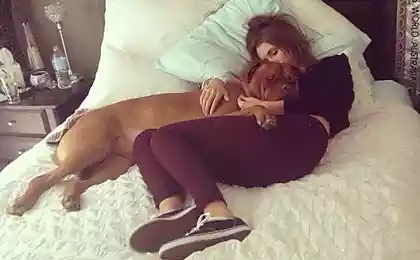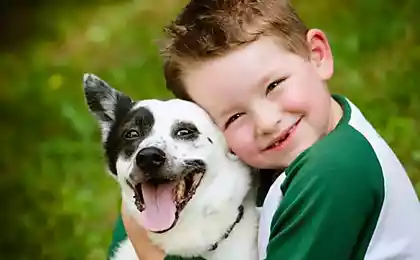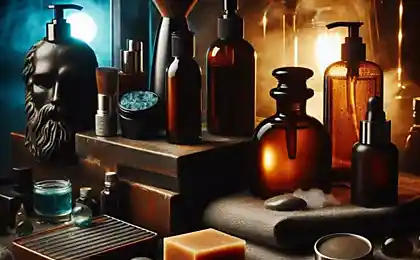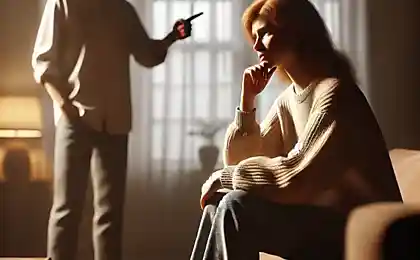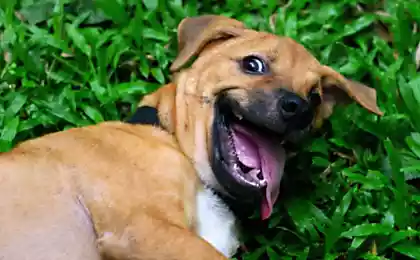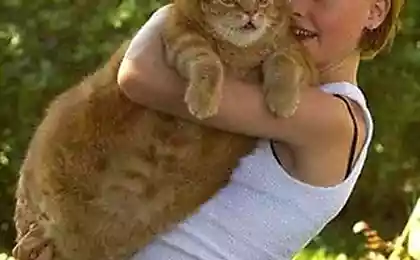219
Big dog in a city apartment - tips for care
On the streets walk beautiful small dog breeds, many of which are now even in fashion - dwarf Spitz, Chihuahua and Yorkshire Terriers. For the owners, they are comfortable, compact, do not require effort. However, you dream of a big and solid dog - St. Bernard, Newfoundland or, for example, Malamute.
The picture is drawn different, but tempting - you proudly walk through the forest park with your big pet, feeling completely safe, and someone frightened, someone enthusiastically looking after you. But there is a caveat - you live not in a large private house, but in a standard city apartment.
It’s a good idea to know which dogs are called big. It is believed that these are those whose weight in adulthood is more than 26 kilograms, and height is 60 centimeters. This, for example,Shepherd, Risen Schnauzer, Rottweiler Or maybe a big Labrador. There are some that can rightly be called giants. The growth of such animals at the withers exceeds 75 centimeters. It's Moscow watchdog, Caucasian, Central Asian and South Russian shepherds, dogs, Irish wolfhound, mastiff, leonberger, bullmastiff, mastino-napoletano, Newfoundland, St. Bernard.
Pros. With good training and proper education, you will have a reliable guard - both for home and for walking.
Such dogs in a sense and assistants – they can be taught, for example, to roll a wheelchair with a baby or carry a bag in their teeth.
Cons. Of course, the bigger the dog, the more space it needs. If there is not enough space, the dog will suffer.
A big dog needs to establish an active lifestyle, otherwise it will carry everything in the house. Such pets are more expensive in content - after all, the greater the weight of the animal, the more food it needs, and even for shampoo for washing you will spend. Veterinary treatment will cost more, for example, overexposure to the time of vacation - the price in this case depends on the height and weight of the dog. In addition to increasing costs, there is also the problem of investing efforts. It is clear that combing such a dog (especially if it is the owner of a long and thick coat), and washing its paws is a more time-consuming process than in the case of small pets. Some people wash large dogs in the bathroom, but this requires constant scraping after street mud brought by the doggy into the house. Cleaning up after such a dog on a city street, frankly, is also much more difficult.
Large dogs age earlier, their life expectancy is shorter than that of small and medium breeds. They are predisposed to certain diseases: dilation-turn of the stomach, osteo-articular disorders, cardiac pathologies, bone and tumor diseases.
Who doesn’t have to have big dogs? Those who are not able to provide the dog with care and the necessary active and long walking because of a lack of time. Also, you should not get such dogs to parents with small children or those who are expecting a child. An exception in the latter case may be good dogs of large breeds - Labradors or Golden Retrievers.
People without experience with “serious” breeds You can get a retriever, husky, but think carefully before you get a Rottweiler or a Caucasian Shepherd, who differ in cool temper.
People who do not have training experience and are not ready to hire professionals. Large dogs simply need a course of obedience. Let's take a simple example. If you are pulled by a tiny poodle on a leash, you will cope with this, but if a big dog entails it, it is possible to smell through the ground with your nose, or even get seriously injured.
The most popular of the large dogs for a city apartment is the Doberman, Neapolitan Mastiff, German Dog, Rottweiler, Airedale Terrier, Labrador, Golden Retriever and German Shepherd.
To solve the problem of disproportionate body development due to too rapid growth, it is important to feed properly.
The main principle of nutrition in puppyhood is more proteins of animal origin, less fat. Do not forget to provide your pet with constant activity on a walk, then the apartment will be more appropriate. It is not bad to include in the "program" running (better with obstacles), and in the corresponding season - swimming.
And most importantly, give your pet enough space. It is not necessary to give him a personal sofa (although this can be provided), but a large bed should be. There are cases when dogs with thick hair – for example, a malamute – are kept on glazed balconies. Some savings, though. The door to the balcony should be constantly open, because the pet needs to move around the apartment during the day.
A large dog needs a special stand for food bowls so that it does not have to lower its head too low. A balanced diet is important because these dogs are more prone to obesity than others. The weakness of large dogs is the deformity of bones and joints, the cause of which, among other things, can be overweight. Nutrition should be rich in vitamins B, potassium, fish oil. The weight of a large dog should be constantly monitored. The optimal daily diet for a pet weighing 30 kilograms (if it is not on dry food) is 500 grams of meat, 120 grams of bread, 140 grams of cereals, 260 grams of vegetables and 10 grams of bone meal.
If your big dog is phlegmatic by nature and too active in movement, you should give him a massage from time to time.
It should also be taken into account that a large dog can pose a certain danger to others.
Source: domashniy.ru/
